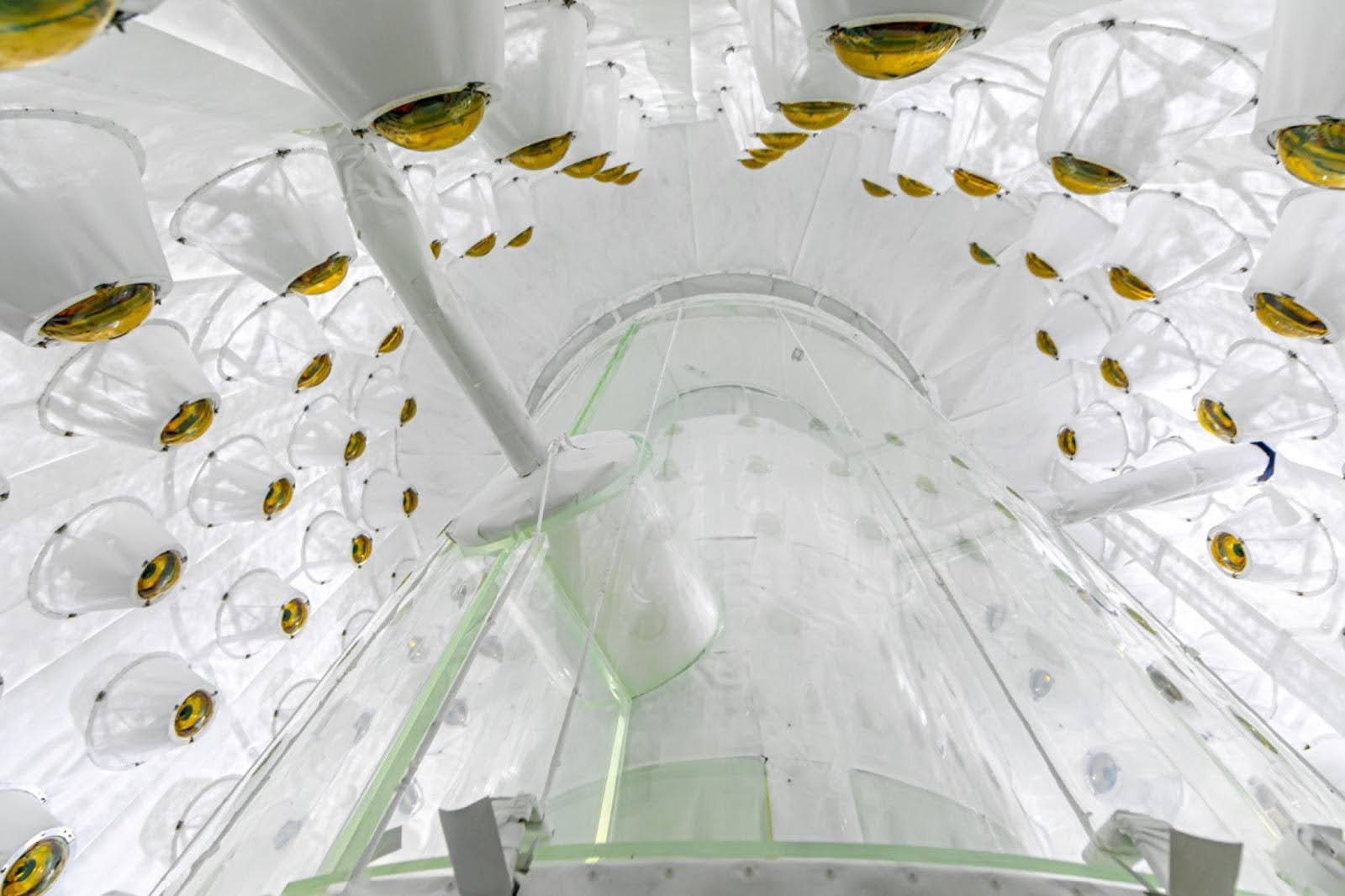
Motivation
Credit: Matt Kapust, Sanford Underground Research Facility
The new Centre of Excellence for Mapping the Dark Universe (DarkMaps) is primed to answer the most fundamental question of existence: what is the nature of the dark matter and dark energy that has shaped the evolution and structure of the Universe, given birth to the stars and galaxies, and seeded our very creation?
There is overwhelming evidence for the dark side - it makes up 95% of the Universe, but its true nature has eluded decades of theoretical and experimental searches even though it exists all around us.
The next decade provides an unprecedented opportunity to connect the physics of the very small to the largest structures in the Universe, from new experiments sensitive to the most minute dark interactions, up to new telescopes mapping the entire sky to enormous depths in time.
We have assembled an interdisciplinary team of the best researchers across Australia who are playing a leading role in the development of our theories and simulations of the dark side, and who are designing the newest experiments and leading the largest astronomical surveys.
The vision of our Centre is to bring this team together to overcome the challenges of understanding the dark side, to discover new physics, and to build the technology infrastructure needed to support this endeavour.
A “dark” cluster at a redshift of z=0.5 producing multiple gravitational lensing of background galaxies - indicating a large abundance of dark matter in the cluster.
Credit: Karl Glazebrook and Tania Barone (ASTRO 3D Galaxy Evolution with Lensing survey), NASA HUbble Space Telescope
A current-generation liquid xenon detector, used for the direct detection of dark matter. This is very similar to what will be used in planned future detectors.
Credit: Matt Kapust, Sanford Underground Research Facility
The Centre will solve cutting-edge problems in the sensitive detection of radiation, using new applications of Artificial Intelligence to accelerate complex physics simulations and to compare them in detail with the cosmic map across space and time, and of developing next generation quantum algorithms.
The Centre will train the next-generation workforce in these new methods of science with a large early-career researcher team and a focussed Indigenous STEM program. Only by solving these very real challenges on Earth can we solve the challenges of understanding the dark side of the Universe.


